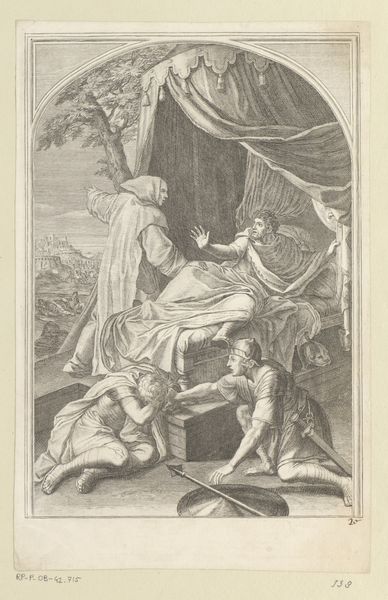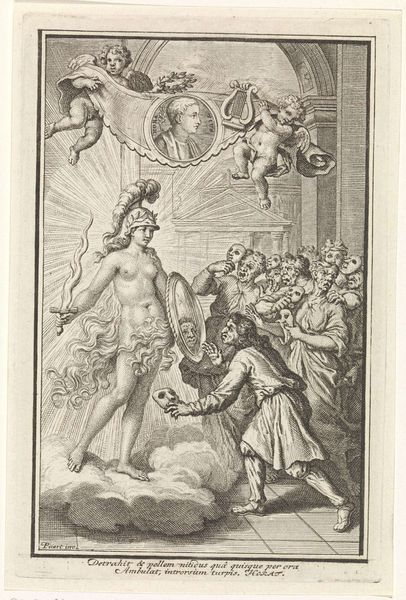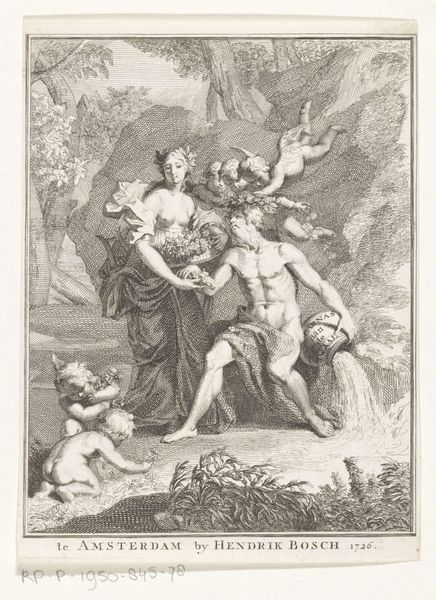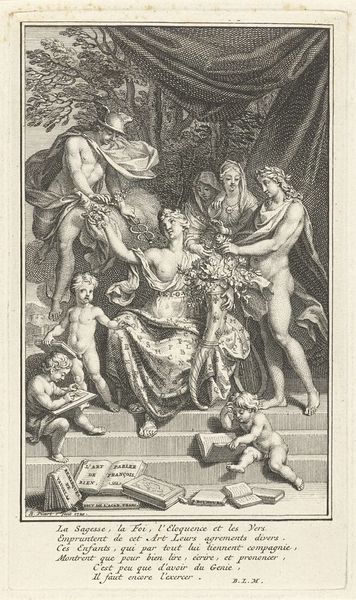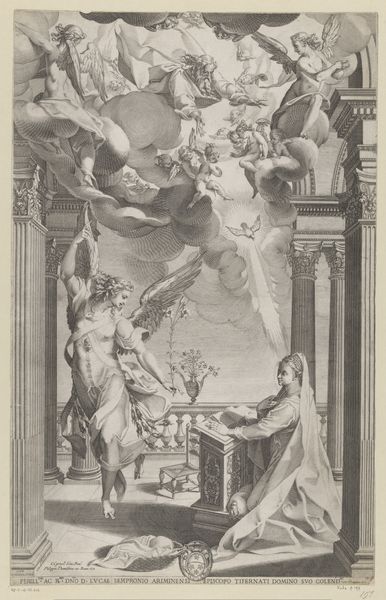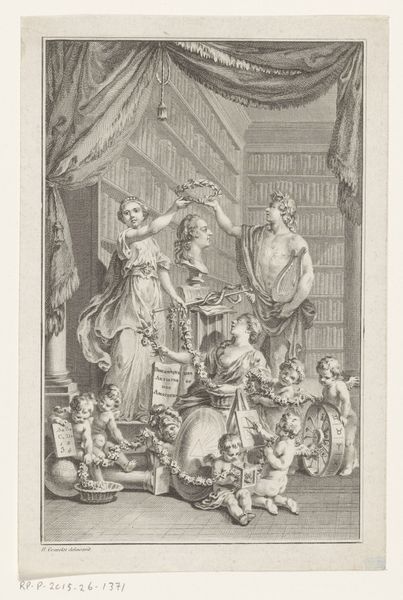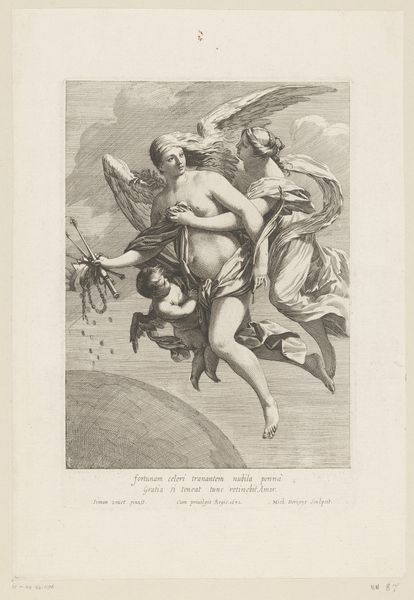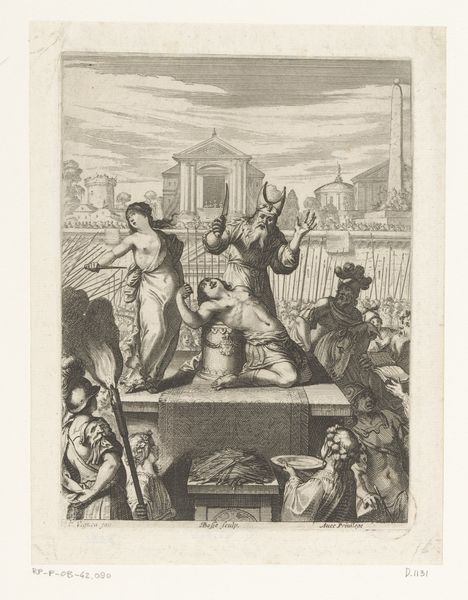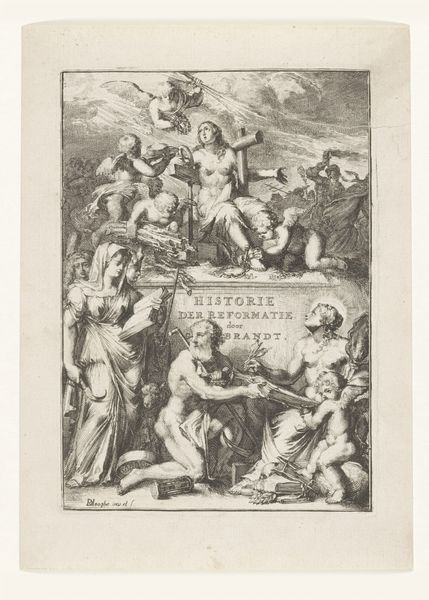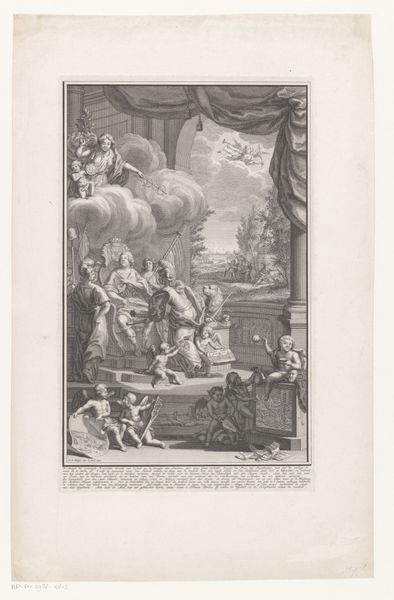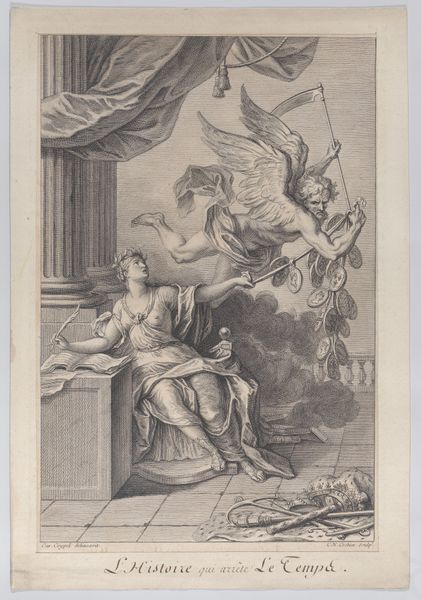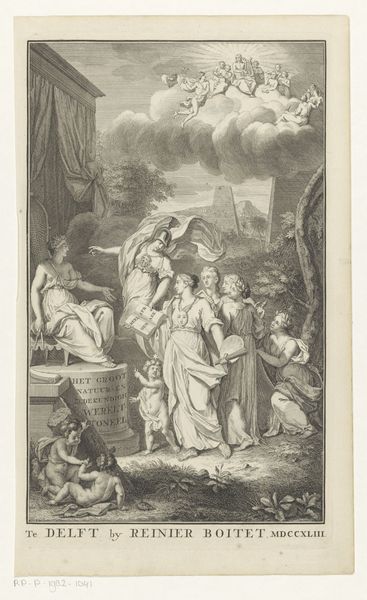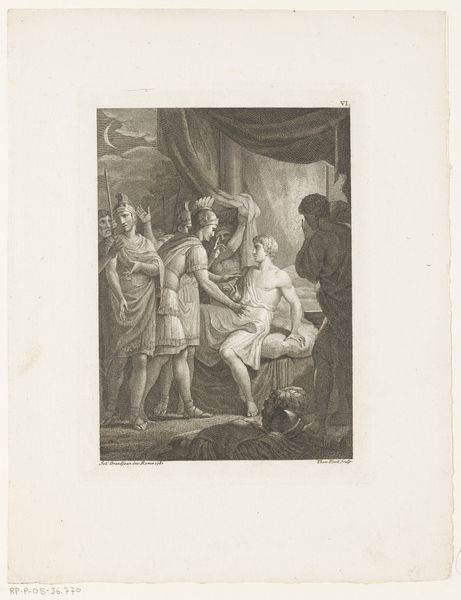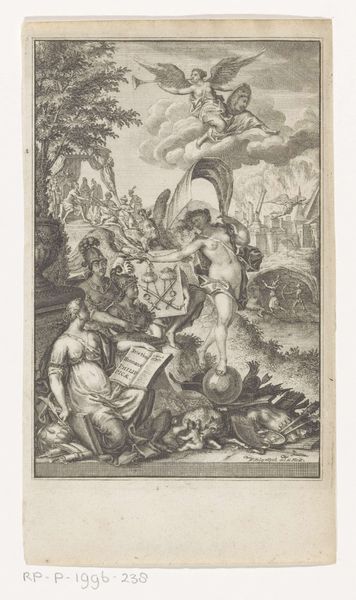
engraving
#
allegory
#
baroque
#
old engraving style
#
figuration
#
history-painting
#
engraving
Dimensions: height 140 mm, width 90 mm
Copyright: Rijks Museum: Open Domain
Curator: Here at the Rijksmuseum we have an allegorical print titled “Allegorische voorstelling met Waarheid”, or Allegorical Representation with Truth. It was produced by Bernard Picart in 1713. It employs an engraving technique. What’s your immediate read on the composition? Editor: Well, immediately, there's a strong chiaroscuro effect, very theatrical. The radiating lines behind the central figure create a visual hierarchy, drawing your eye directly to her form and what looks like a somewhat repulsed crowd in opposition. There’s definitely an imbalance to it. Curator: Yes, indeed. The print depicts the allegorical figure of Truth, standing radiant, holding a mirror. But the group on the right reacts in horror, seeming to recoil from the figure and the very image in the mirror, even wielding their own theatrical masks as weapons, you might say. The mask itself represents falsehood and deception; it becomes a weapon against Truth, which stands in direct confrontation to artifice. Editor: Fascinating. That positioning, the play with light and shadow—it really amps up the drama. What exactly do those cherubic figures holding a banner at the top signify? It's integrated into the classical architecture backdrop quite deliberately. Curator: The figures, rendered in a lighthearted, classical style, carry a banner with an inscription—a motto. It's partially obscured, but we can make out phrases suggesting that Truth reveals the internal corruption, "morbus," that dwells beneath the surface, beneath the masks humanity wears. Editor: It almost has the feel of moral commentary; Truth unveiled, exposing the grim realities beneath society’s facade. The rigid lines accentuate the dramatic contrast between the blinding light of the female form and what she stands for in juxtaposition to the gesticulating crowd. What else might we interpret in this stark symbolism? Curator: It's a pointed cultural commentary, a warning against vanity and hypocrisy that resonated strongly in its time. It urges people to acknowledge their imperfections rather than hide behind illusion and self-deception. And it urges one to turn inward, in a sense, and to really engage in a difficult confrontation with the self through that emblem of Truth in her reflective mirror. Editor: The more I consider its design, the engraving becomes much more than an artwork, but a complex commentary on social facades. This piece seems remarkably ahead of its time. Curator: Yes, Picart offers us not just art but also a lasting reflection on human nature.
Comments
No comments
Be the first to comment and join the conversation on the ultimate creative platform.
